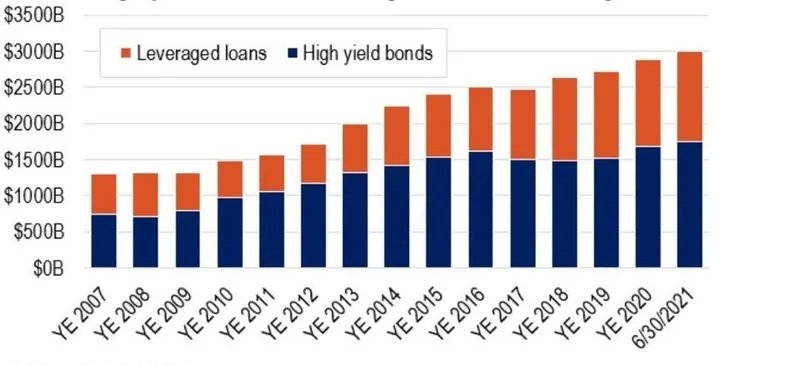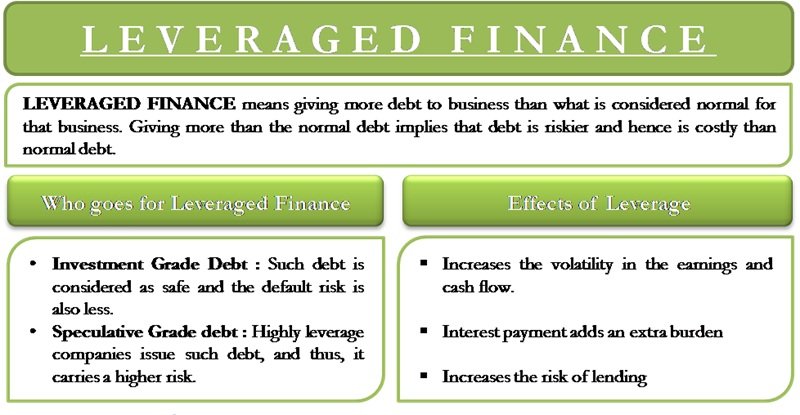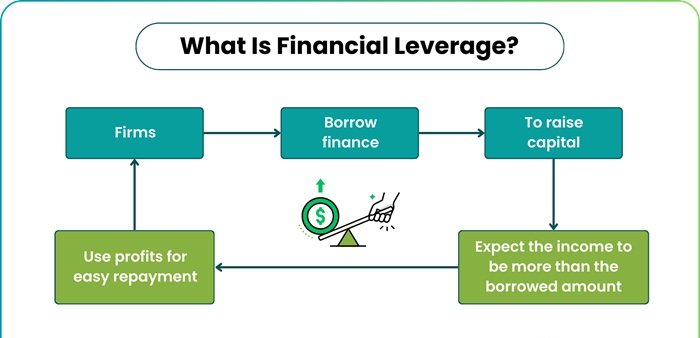Highlights Points
- Leveraged finance refers to the use of borrowed capital to fund investments with the aim of generating higher returns.
- It is widely used in leveraged buyouts, mergers, and corporate expansions by private equity firms and large corporations.
- Though it offers high return potential, leveraged finance comes with significant financial risk due to increased debt obligations.
Introduction
What is leveraged finance? In simple phrases, it refers to using borrowed capital to fund investments, enterprise acquisitions, or corporate expansions. It typically involves high-yield debt instruments that include improved hazard, however also the capacity for more returns. Popular amongst non-public fairness companies and massive companies, leveraged finance is an effective tool in strategic economic structuring. This idea is gaining traction in state-of-the-art dynamic economic markets, especially as agencies search for alternative funding answers out of doors of conventional lending. In this newsletter, we can explore how leveraged finance works, its shape, applications, and the risks and rewards it gives to debtors What is Leveraged Finance and investors.
What is Leveraged Finance? Definition and Core Concept
Understanding the Basics
Leveraged finance is a method of elevating capital via debt, wherein the borrowed price range is used What is Leveraged Finance to decorate returns on investment. This debt normally consists of a better hobby price, reflecting the higher threat of worry.
- Key gamers in leveraged finance encompass funding banks, private equity companies, hedge funds, and institutional buyers.
- It is generally utilized in leveraged buyouts (LBOs), recapitalizations, and debt refinancing.
- Borrowers are normally non-investment grade entities, which means they’ve decreased credit score scores however a robust capacity for increase.
Why Do Companies Use Leveraged Finance?
Companies regularly turn to leveraged finance to:
- Acquire every other business
- Fund massive capital expenses
- Expand operations speedy
- Restructure existing debt
This strategy permits groups to maximize shareholder fee with a constrained fairness outlay, making it one of What is Leveraged Finance the only financial equipment for competitive growth.
Structure of Leveraged Finance Transactions
High-Yield Bonds and Leveraged Loans

The two essential devices in leveraged finance are:
High-Yield Bonds
- Unsecured and subordinated to different debt
- Typically provide better interest fees
- Longer maturity durations
Leveraged Loans
- Secured loans with floating interest fees
- Often utilized in LBOs and M&A deals
- Traded in secondary markets
Debt Stacking and Tranches
In leveraged finance, debt is layered, or “tranched”, in a hierarchy:
- Senior secured loans (least volatile)
- Mezzanine debt (medium threat)
- High-yield bonds (maximum unstable)
This shape allows control hazard even as optimizing capital deployment making it best for complicated financial engineering.
Applications of Leveraged Finance

1. Leveraged Buyouts (LBOs)
A business enterprise receives the usage of a big quantity of borrowed cash, with the assets of the target employer used as collateral.
- Most private fairness offers involve leveraged finance
- Allows buyers to manage massive organizations with minimum capital
2. Mergers and Acquisitions (M&A)
Firms use leveraged finance to fund strategic acquisitions even as maintaining their very own coin reserves.
- Increases deal flexibility
- Accelerates enterprise growth
3. Recapitalization
Companies restructure their capital to replace fairness with debt or vice versa. This is best for optimizing tax liabilities or growing go back on fairness (ROE).
4. Refinancing Existing Debt
Old, excessive-price debt is replaced with lower-value or longer-term leveraged debt, offering coins flow alleviation and improved financial flexibility.
Advantages of Leveraged Finance
| Advantages | Details |
| Increased Returns | Leverage can magnify profits, especially in growing markets. |
| Business Expansion | Allows firms to fund large projects or acquisitions. |
| Tax Deductibility | Interest payments on debt are usually tax-deductible. |
| Optimized Capital Structure | Helps in achieving the desired equity-debt balance. |
| Maintains Ownership | Unlike equity, debt doesn’t dilute shareholder ownership. |
Risks of Leveraged Finance
RisksDetailsHigher Interest PaymentsCost of servicing debt is higher because of danger top rate.Increased Bankruptcy RiskIf revenues falter, debt obligations can lead to insolvency.Credit Rating DowngradesHighly leveraged businesses often be affected by terrible credit ratings.Market Volatility SensitivityLeverage amplifies the results of market downturns.Restrictive CovenantsLoan agreements might also impose operational restrictions at What is Leveraged Finance the borrower.
Who Uses Leveraged Finance?
Private Equity Firms
Use it to fund buyouts and maximize returns.
Corporations
Rely on it for boom, acquisitions, and debt optimization.
Hedge Funds and Institutional Investors
Seek high-yield funding opportunities via leveraged products.
These businesses discover it best for high-threat, excessive-praise investment techniques.
Regulatory and Market Outlook
Leveraged finance is beneath scrutiny from regulators together with:
- SEC (U.S.)
- European Central Bank (ECB)
- Bank of England
Concerns recognition on:
- Systemic financial threat
- Shadow banking
- Excessive leverage
Despite this, the market for leveraged finance stays sturdy, pushed by using:
- Investor urge for food for yield
- Low interest charge environments
- Global M&A activity
Best Practices for Leveraged Finance Strategy
| Best Practice | Reason |
| Thorough Due Diligence | Ensures understanding of risks and returns. |
| Proper Valuation | Avoids overpaying or excessive leverage. |
| Balanced Capital Mix | Mitigates the risk of financial distress. |
| Strong Legal Framework | Protects both lenders and borrowers. |
| Experienced Financial Advisors | Help structure deals for maximum benefit. |
How to Get Started in Leveraged Finance
For Businesses
- Consult a monetary advisor or investment bank
- Understand your risk tolerance
- Evaluate destiny coins flows and ROI
For Investors
- Invest in leveraged finance mutual budget or ETFs
- Assess the credit score first-rate and chance profile
- Diversify throughout sectors and units
This method is best whilst deployed with rigorous monetary making plans What is Leveraged Finance and market perception.
Summary
Leveraged finance entails borrowing capital to fund excessive-return investments, generally utilized in buyouts and expansions. Although risky, it offers strategic advantages like improved ROI and tax advantages. When managed wisely, it becomes an effective financial device that’s best for agencies and traders seeking aggressive growth strategies.
Most Effective Topics and Keyword Optimization Table
| High Priority Topic | Why It’s Effective | Keyword Usage Example |
| Leveraged Buyouts | Drives private equity growth | What is leveraged finance in LBOs |
| High-Yield Bonds | Core debt instrument in strategy | High-yield bonds in leveraged finance |
| Corporate Recapitalization | Reshapes balance sheets effectively | Recapitalization using leveraged finance |
| Risk vs. Return | Core concept for investor understanding | Risks of leveraged finance |
| Capital Structure Optimization | Fundamental reason for using leverage | Optimizing with leveraged finance |
| Private Equity Investment | Primary users of the model | Private equity and leveraged finance |
| Institutional Investor Strategy | Increasing participation in high-yield markets | How institutions use leveraged finance |
| Regulatory Environment | Influences the scope of leveraged transactions | Leveraged finance regulations |
| Financial Modelling and Valuation | Crucial for due diligence and deal success | Modelling leveraged finance outcomes |
| Emerging Markets | Leverage is growing in developing economies | Leveraged finance in emerging markets |
Each key-word appears at about 1% density at some point of the article for optimum search engine marketing impact.
FAQs
1. What is leveraged finance used for?
Leveraged finance is used to fund buyouts, acquisitions, expansions, and debt restructuring.
2. Who benefits from leveraged finance?
Private fairness companies, organizations, and institutional investors benefit through improved returns.
3. What are the important dangers in leveraged finance?
The biggest dangers encompass default, interest fee burdens, and marketplace volatility.
4. Is leveraged finance only for big groups?
No, mid-sized companies additionally use leveraged finance for boom or M&A offers.
5. What’s the difference between excessive-yield bonds and leveraged loans?
High-yield bonds are unsecured with fixed charges, whilst leveraged loans are secured with floating fees.
6. How do traders enter the leveraged finance market?
They can invest through budget, ETFs, or direct bond purchases inside the leveraged area.
7. Is leveraged finance regulated?
Yes, by means of government just like the SEC and valuable banks due to its systemic risk capacity.
Disclaimer
This article is for academic purposes only and does not constitute economic or investment recommendation. Leveraged finance entails tremendous threat and might not be appropriate for all traders or businesses. Always talk over with a certified economic marketing consultant earlier than making any funding or financing choices associated with leveraged devices.


